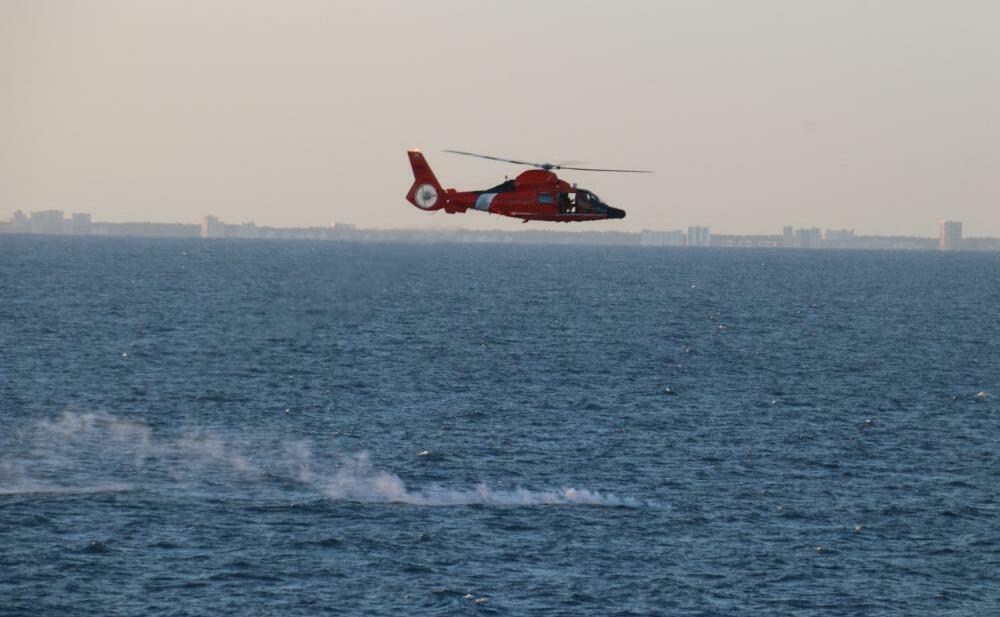Section Branding
Header Content
This wasn't the first Chinese balloon over the U.S. Why were the others ignored?
Primary Content
Given the hullabaloo over the Chinese surveillance balloon, you'd think something like this never happened before.
But it has. At least four other times in recent years.
According to U.S. officials, Chinese balloons crossed over the U.S. at least three times during the Trump administration and at least one other time earlier in the Biden administration.
However, the U.S. was not aware of the Chinese incursions at the time, according to Air Force Gen. Glen VanHerck, the head of NORAD and the officer responsible for domestic air threats.
He told a news conference that the military only learned of the intrusions after they were pieced together by the intelligence community after they happened.
"As the NORAD commander, it's my responsibility to detect threats to North America," VanHerck said. "I will tell you that we did not detect those threats, and that's a domain awareness gap that we have to figure out."
"The intel community, after the fact, made us aware of those balloons that were previously approaching North America or transited North America," he added.
U.S. officials have not said precisely when or where those balloon incursions took place, or how the intelligence community was able to discover them in retrospect.
U.S. officials say those incursions were brief — unlike the most recent one, which lasted for a week.
Rep. Michael Waltz, a Florida Republican, said defense officials identified the locations of the previous balloon incursions when briefing lawmakers over the weekend. The Washington Post reported the locations included Texas, Florida, Hawaii and Guam.
The Biden administration and the Pentagon say they've offered to brief senior officials in the Trump administration about the incursions that took place during Donald Trump's time in office.
On social media, Trump described the Chinese balloon incursions during his presidency as "fake disinformation."
One of Trump's defense secretaries, Mark Esper, told CNN, "I don't ever recall somebody coming into my office or reading anything that the Chinese had a surveillance balloon above the United States."
A much different incident this time
U.S. officials say the Chinese motive remains unclear. The U.S. believes Chinese satellites have already acquired the same, or very similar information.
China has been using balloons to surveil numerous other countries in recent years, which is somewhat puzzling to U.S. officials.
China's massive espionage program is considered first-rate. Yet the balloon operation over the U.S. was seen as clumsy and clunky.
The Chinese had to know that a large balloon — visible to civilians with the naked eye — would be detected. That raises the possibility that one of the Chinese goals was to see how the U.S. would react to this kind of provocation.
The clear answer is that it sparked a partisan feud in the U.S. Republicans are attacking President Biden for not shooting down the balloon sooner, while most Democrats are defending the president for taking a cautious, measured approach.
The episode also ratcheted up U.S.-China tensions and led Secretary of State Antony Blinken to cancel a trip this week to China where he planned to meet senior leaders in an effort to reduce friction.
Shot down off the South Carolina coast
A U.S. Air Force jet fired a single missile to shoot down the balloon just off the coast of South Carolina on Saturday afternoon. The military said it waited until the balloon was no longer over U.S. territory in order to remove the possibility that falling debris could harm people.
China, which has claimed this was one of its weather balloons that veered off course, criticized the U.S. response.
"The U.S. use of force is a clear overreaction and a serious violation of international practice," China's Foreign Ministry said in a statement.
The U.S. Navy is using unmanned submarines in an attempt to find as much debris as possible, particularly key equipment, like sensors and monitoring devices, the Pentagon said.
The remnants of the balloon came crashing down about six miles offshore in relatively shallow waters around 50 feet deep. The Navy is searching an area that's about one square mile.
U.S. officials feel they've already learned some lessons by closely tracking the balloon for a week before shooting it down.
"This gave us the opportunity to assess what (the Chinese) were actually doing, what kind of capabilities existed on the balloon, what kind of transmission capabilities existed," said VanHerck.
While the U.S. has not divulged details, it did try to electronically jam the Chinese equipment to keep it from transmitting back to China. Security was also increased at sensitive U.S. military sites in an attempt to shield them from the balloon.
Greg Myre is an NPR national security correspondent. Follow him @gregmyre1.
Copyright 2023 NPR. To see more, visit https://www.npr.org.


